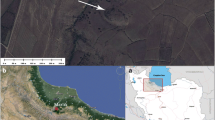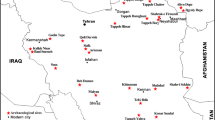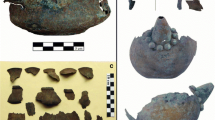Abstract.
Patinas naturally formed on archaeological bronze alloys were characterized using light microscopy (LM), micro energy dispersive X-ray fluorescence analysis (μ-EDXRF), time of flight secondary ion mass spectrometry (TOF-SIMS) and scanning electron microscopy in combination with energy dispersive X-ray microanalysis (SEM/EDX). The examinations carried out on cross-sections of samples have shown that in all samples the copper content in the corrosion layer is lower than in the bulk, while an increase of tin and lead could be observed. Two different types of corrosion were found: first type, a corrosion formation leading to a three layer structure was observed on lead bronze. The outer layer consists mainly of Cu(II) compounds and soil material, followed by a fragmented layer of cuprous oxide and the surface layer of the alloy, where a depletion of copper and an enrichment of tin and high amounts of Cl could be detected. The second type of corrosion is characterized by a two layer structure on the tin bronze sample consisting of an outer layer with copper containing corrosion products and a layer with cracks, which reveals a depletion of copper whereas tin and lead are enriched. Also high amounts of Si were detected in this surface layer.
Similar content being viewed by others
Author information
Authors and Affiliations
Rights and permissions
About this article
Cite this article
Wadsak, M., Constantinides, I., Vittiglio, G. et al. Multianalytical Study of Patina Formed on Archaeological Metal Objects from Bliesbruck-Reinheim. Mikrochim Acta 133, 159–164 (2000). https://doi.org/10.1007/s006040070086
Issue Date:
DOI: https://doi.org/10.1007/s006040070086




